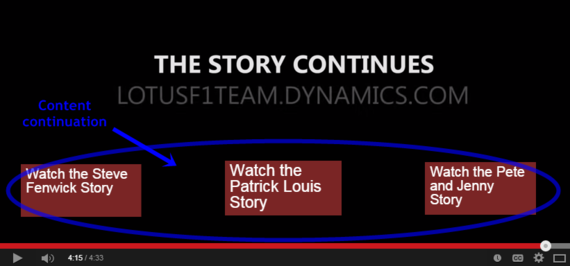As published to The Huffington Post
What do you get when you mix a brewery, racecars and a big technology company? A race to the finish line.
That’s been Mircosoft’s recent experience, at least. The company, once produced aWindows 386 commercial GeekBeat.TV host, John Pozadzides, criticized as having “bad acting, bad rapping, and bad 80’s hair.” But a new approach to content marketing proves it’s come a long way in its video marketing.
Microsoft’s Dynamics product is a line of enterprise resource planning and customer relationship management software applications. Not exactly the type of content you’d search for on YouTube. But the product line’s creative marketing team has been able to get viewers to do just that.
Microsoft’s recent “Flavor and Fuel” campaign was designed to inspire and engage with business professionals who really don’t expect Microsoft to do more than provide the latest business technology. Done by sharing captivating stories from a behind-the-scenes perspective.

The MS Dynamics team developed their recent content modeling to be customer-relevant, and human-relevant, without being overtly product or fan-driven. Creating content that has value in and of itself beyond the marketing is important as marketers are no longer only fighting for a prospect’s attention, versus the competition. The battle is on all fronts.
 As humans our attention is pulled in many directions; friends on social, professional ideas on LinkedIn, personal past times on forums, Hulu and even our families seem to want us to “pay attention” to them. If people do not value your content they will quickly move onto something else, taking that investment of time elsewhere.
As humans our attention is pulled in many directions; friends on social, professional ideas on LinkedIn, personal past times on forums, Hulu and even our families seem to want us to “pay attention” to them. If people do not value your content they will quickly move onto something else, taking that investment of time elsewhere.
If a customer is already deep into a relationship with you then they can and will extract value from information that is specific and detailed about your products or services. When you are growth hacking, looking to increase your subscribers or customer base then you don’t yet have that relationship. And that is when you need to weave your content and objectives into content that has inherent value.
The concept of the attention economy isn’t new. In fact, my industry friend, former Microsoft manager, and now Vice-president of Marketing at Sprinklr, Jeremy Epsteinwrote about it in 2008, asking, “How do we effectively cut through all the noise to establish authentic dialogue and relationships and… make money?” Seven years later, addressing it and respecting it within the craft of marketing, is still very much evolving.
Every time there is a breakthrough content delivery approach or channel (think Pinterest, Snapchat) marketers need to explore how that can affect their ability togrowth hack in their target markets.
Because the video content is about real people and about interesting businesses, it reaches and resonates to more than just enterprise project managers and the like. Universal themes around people, processes, and technology pair nicely with stories about real people, and it works.
And their accompanying full features: Lotus F1 Team micro-documentary, and New Belgium micro-documentary.
And in good content marketing practice, there is still a next step the audience can take, as is linked at the end of the film, where those who want to know more about the companies involved can continue the journey. There, they find out how they too can build the same partnership focused on creating amazing customer experiences.
Woodget explains it as “still marketing, it’s just marketing that doesn’t suck, delivered as real content with real value in and of itself.”
And the results are telling. Not only has the documentary short version been featured at or won over fifteen film festivals to date, the campaign has some good old fashioned metrics, too.
“The content was picked up by F1 and brewing communities and ultimately resulted in over forty percent increase in traffic being driven to the target site, seven times more actions, and three times more digital engagement,” Woodget recites. “We’re pretty excited by that.”
After all, that’s the sort of thing marketers love.







